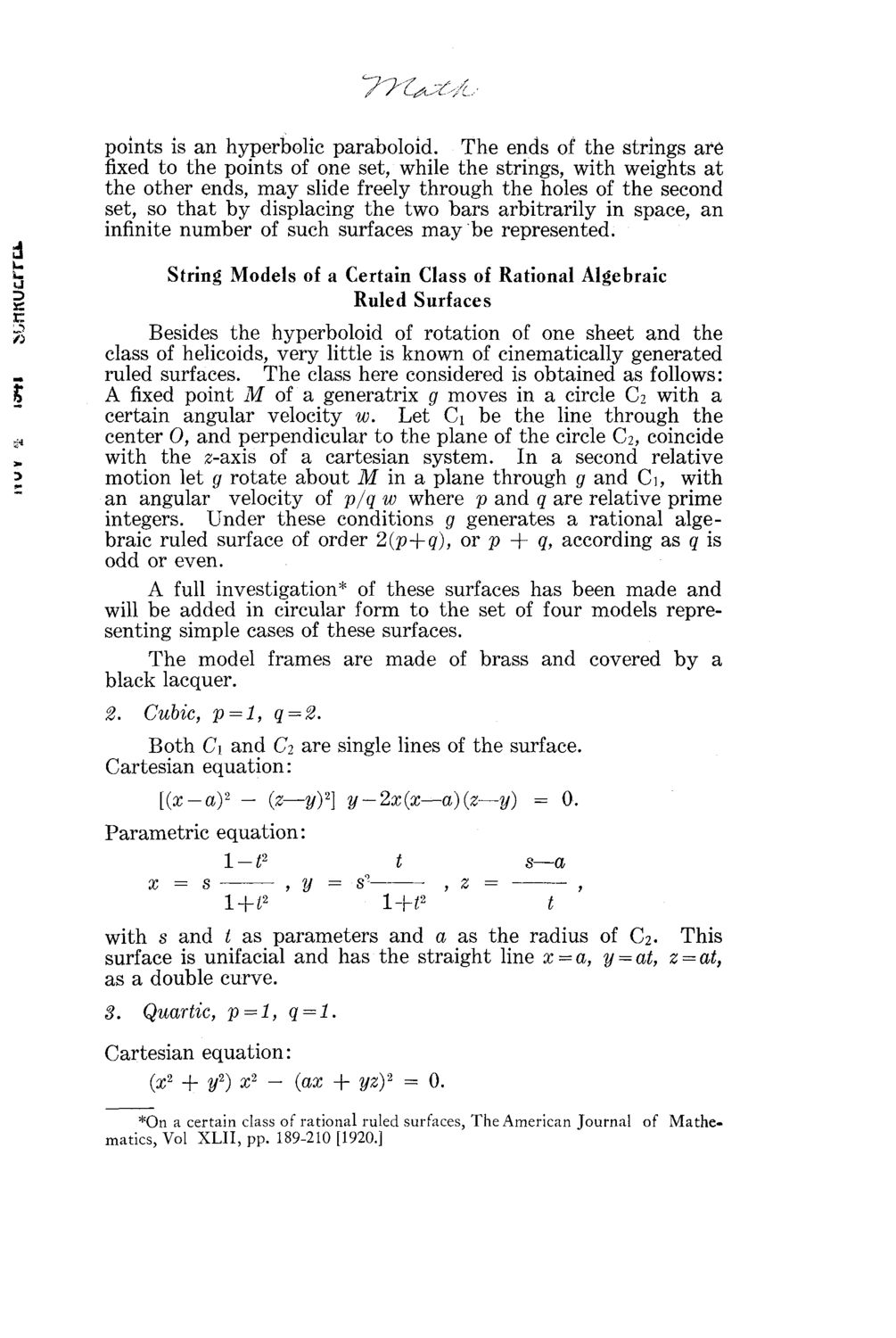| |
| |
Caption: Mathematical Models by Arnold Emch - Series 1 (1920)
This is a reduced-resolution page image for fast online browsing.

EXTRACTED TEXT FROM PAGE:
y^yt^c/u points is an hyperbolic paraboloid. The ends of the strings are fixed to the points of one set, while the strings, with weights at the other ends, m a y slide freely through the holes of the second set, so that by displacing the two bars arbitrarily in space, an infinite number of such surfaces m a y be represented. d ^ j? j n % String Models of a Certain Class of Rational Algebraic Ruled Surfaces Besides the hyperboloid of rotation of one sheet and the class of helicoids, very little is known of cinematically generated ruled surfaces. The class here considered is obtained as follows: A fixed point M of a generatrix g moves in a circle C2 with a certain angular velocity w. Let Ci be the line through the center 0, and perpendicular to the plane of the circle C2, coincide with the 2-axis of a cartesian system. In a second relative motion let g rotate about M in a plane through g and Ci, with an angular velocity of p/q w where p and q are relative prime integers. Under these conditions g generates a rational algebraic ruled surface of order 2(p+q), or p + q, according as q is odd or even. A full investigation* of these surfaces has been made and will be added in circular form to the set of four models representing simple cases of these surfaces. The model frames are made of brass and covered by a black lacquer. S # 1 1 2. Cubic, p = l, q = 2. Both C\ and Ci are single lines of the surface. Cartesian equation: [(x-a)2 - (z—y)2} y-2x(x—a){z—y) = 0. Parametric equation: 1-t2 x = s = 1+t2 , y —=s 1-N2 t ,z = = t s—a , with s and t as parameters and a as the radius of C2. This surface is unifacial and has the straight line x = a, y = at, z = at, as a double curve. S. Quartic, p=l, q = l. Cartesian equation: (x2 + y2) x2 - (ax + yz)2 = 0. *On a certain class of rational ruled surfaces, The American Journal of Mathe» matics, Vol XLII, pp. 189-210 [1920.]
| |